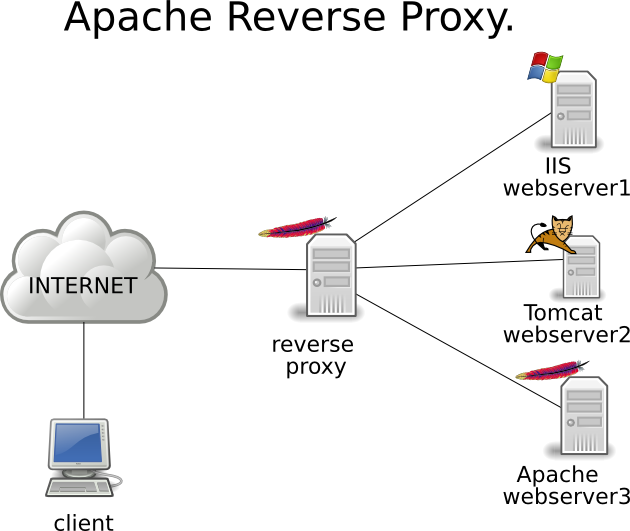What Is a DDoS Attack? A Comprehensive Guide to Understanding Distributed Denial-of-Service Attacks
A DDoS (Distributed Denial-of-Service) attack is a cyberattack designed to disrupt normal server, service, or network traffic by overwhelming it with a flood of internet traffic. These attacks are launched from multiple sources, which can include compromised computers, devices, or networks—often referred to as a “botnet”—making them challenging to prevent and mitigate. In this article, we’ll explore what is a DDoS attack, how it operates, its various types, and how organizations can protect themselves.

Table of Contents
What is a DDoS Attack?
A Distributed Denial-of-Service (DDoS) attack is a malicious attempt to disrupt the normal functioning of a targeted server, service, or network by overwhelming it with massive traffic. Unlike a traditional Denial-of-Service (DoS) attack, which originates from a single source, a DDoS attack leverages multiple devices across the internet to create an even larger impact.
By flooding the target system with excessive requests, a DDoS attack makes it difficult or impossible for legitimate users to access the service, causing potential downtime, financial losses, and reputational damage for businesses.
How Does a DDoS Attack Work?
A DDoS attack works by coordinating multiple devices, typically infected with malware, to act as a “botnet.” These compromised devices, or “bots,” are under the control of an attacker and work together to send an overwhelming number of requests or data packets to the targeted server.
Key Components of a DDoS Attack
- Botnet Creation: Attackers use malware to infect and control a large number of devices, such as computers, smartphones, or IoT devices, creating a botnet.
- Command and Control (C&C) Server: This server acts as the central control hub for the botnet, sending instructions to bots on when and where to direct the attack.
- Flooding the Target: Bots send a high volume of traffic or requests to the target, overwhelming its resources and causing a slowdown or total shutdown of services.
DDoS attacks are challenging to stop due to the widespread nature of the botnet, which can include devices from all over the world, making it difficult to filter out malicious traffic effectively.
Types of DDoS Attacks
DDoS attacks can vary in intensity and technique, typically categorized into three main types:
1. Volume-Based Attacks
Volume-based attacks focus on generating high volumes of traffic to saturate the target’s bandwidth. These are often the most straightforward types of attacks, using sheer numbers to overwhelm a system.
- Examples: UDP floods, ICMP floods, and spoofed-packet floods.
- Impact: Bandwidth exhaustion, leading to network congestion and unavailability.
2. Protocol Attacks
Protocol attacks exploit vulnerabilities in network protocols to overwhelm server resources. These attacks target connection tables and firewalls, taking advantage of network protocols to disrupt services.
- Examples: SYN floods, Ping of Death, and fragmented packet attacks.
- Impact: Exhaustion of resources like firewalls and load balancers, causing disruptions.
3. Application Layer Attacks
Application layer attacks, also known as layer 7 attacks, are often more sophisticated and target specific applications or services directly.
- Examples: HTTP floods, Slowloris attacks, and DNS query floods.
- Impact: High resource usage at the application layer, causing slowdowns and crashes on websites or online applications.
Each type of DDoS attack requires different mitigation strategies, making it essential to have a multi-layered defense in place.
Common Targets of DDoS Attacks
DDoS attacks can impact any organization with an online presence, but certain industries are more frequently targeted:
- Financial Services: Banks and financial institutions are often targeted to disrupt services and erode trust among customers.
- E-commerce: Online retail platforms can suffer from downtime, leading to lost sales and frustrated customers.
- Media and Entertainment: High-profile media sites can be targeted to silence communication or disrupt content delivery.
- Healthcare: Medical facilities are increasingly targeted, which can disrupt access to critical patient data.
Many attacks are politically motivated or financially incentivized, making high-traffic, public-facing sites prime targets for disruption.
Real-Life Examples of DDoS Attacks
Famous DDOS Attacks
GitHub Attack (2018)
In 2018, GitHub experienced one of the largest DDoS attacks on record, with traffic peaking at 1.35 terabits per second. Using a technique called “Memcached amplification,” attackers sent a flood of data that temporarily disrupted GitHub’s operations before they successfully mitigated the attack.
Dyn Attack (2016)
The DNS provider Dyn was hit by a DDoS attack in 2016, disrupting services for major platforms like Twitter, Netflix, and Reddit. This attack, which leveraged IoT devices in the botnet, highlighted the vulnerabilities within IoT security.
Estonia Attack (2007)
One of the earliest documented large-scale DDoS attacks was on Estonia’s government and financial infrastructure in 2007. The politically motivated attack disrupted online services, leading Estonia to overhaul its cybersecurity policies.
These examples illustrate the wide-reaching impacts that DDoS attacks can have, affecting not only individual organizations but entire networks and countries.
How to Detect a DDoS Attack
Early detection is crucial for minimizing the damage caused by a DDoS attack. Common signs include:
- Unusual traffic patterns: Sudden surges in traffic from unfamiliar sources or locations.
- Slow website or service performance: Sluggish response times or frequent timeouts.
- Increased server CPU usage: Unexpected spikes in resource usage.
Detection Tools: Using network monitoring tools like SolarWinds, Datadog, or Zabbix can help organizations detect unusual traffic patterns early, allowing them to take preventive measures.
Strategies for DDoS Attack Mitigation
While DDoS attacks can be complex to prevent entirely, there are effective DDOS Attack Prevention strategies to minimize their impact:
1. Use a Web Application Firewall (WAF)
A WAF helps filter and block malicious traffic at the application layer. By examining incoming requests, a WAF can block abnormal patterns and mitigate application-layer attacks.
2. Employ a Content Delivery Network (CDN)
CDNs can help absorb the load of a DDoS attack by distributing traffic across multiple servers, reducing the direct impact on the primary server.
3. Rate Limiting and Traffic Filtering
Setting limits on the number of requests per second from a single IP or user can help prevent traffic overload and preserve resources for legitimate users.
4. Leverage DDoS Mitigation Services
Dedicated DDoS mitigation services like Cloudflare, AWS Shield, or Akamai provide comprehensive protection by analyzing traffic patterns and blocking malicious traffic before it reaches your servers.
5. Load Balancing
Load balancing helps distribute traffic evenly across multiple servers, reducing the likelihood of any single server becoming overwhelmed.
By implementing a combination of these strategies, organizations can reduce the risk and impact of DDoS attacks significantly.
For organizations seeking reliable protection against DDoS attacks, BlueAngelHost offers dedicated server solutions with built-in DDoS attack prevention. Our servers are specifically configured to handle high-traffic volumes while safeguarding your network from malicious attacks, ensuring continuous uptime and performance. With advanced DDoS mitigation features, BlueAngelHost provides a secure hosting environment designed to keep your business online even during large-scale attack attempts.
Frequently Asked Questions
What is the main purpose of a DDoS attack?
The main goal is to disrupt services, causing downtime and preventing legitimate users from accessing the target’s online services.
How can I tell if my site is under a DDoS attack?
Signs of a DDoS attack include unusual traffic spikes, slow website performance, and increased resource usage. Network monitoring tools can help detect these early warning signs.
Can a firewall stop a DDoS attack?
A firewall provides basic filtering but isn’t enough to stop large-scale DDoS attacks. Combining firewalls with WAFs, CDNs, and DDoS mitigation services is more effective.
Why do attackers launch DDoS attacks?
Motivations can range from financial gain and political agendas to simple mischief. Some attackers demand ransoms, while others may be motivated by ideology or competition.
How long do DDoS attacks typically last?
Attack durations vary widely, from a few minutes to several days, depending on the attacker’s resources and intent.
What is a DDOS Attack?
A DDoS (Distributed Denial of Service) attack is when multiple sources flood a website or online service with excessive traffic, overwhelming it and causing it to slow down or crash. This prevents legitimate users from accessing the service.
Conclusion
Understanding what is a DDoS attack? and how it works is crucial for organizations in today’s digital landscape. With the right preventive measures—such as WAFs, CDNs, load balancing, and real-time monitoring—businesses can defend themselves against these disruptive attacks. DDoS attacks are continuously evolving, making it essential to stay informed and proactive in building a resilient cybersecurity strategy. Taking these steps not only protects your network but also secures your organization’s reputation and financial health.






